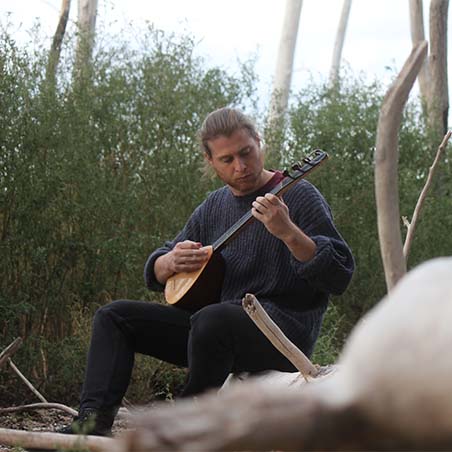Thomas Hoy
UX Designer, Detour UX
Bachelor of Music, 2014
I do think of myself as a creator first and foremost.
Thomas Hoy hadn’t thought about a career in music—until he came to King’s.
“The whole music thing really started there. I found my musical community at King’s in first year. Then I went on to compose music for plays staged by the King’s Theatrical Society (KTS), and the Dalhousie Theatrical Society. It was all part of the path that has led me here. “
The “here” Thomas is talking about is his work as a UX design consultant. Key to understanding how music brought him to design lies in his innate creativity.
Thomas says, “I enjoy the act of creation. I like experimenting with things until I produce a certain result. I do enjoy performing, but for me most of the joy is in creating.”
After graduating Thomas went traveling, including spending six months in India. When he came back to Toronto, people he knew from his King’s community were adding film to their creative repertoires. Thomas joined in and began writing scores for films such as Drawing Duncan Palmer directed by Rebecca Love, FYP 2009. Then came the opportunity to work on the score for Nina Beveridge’s documentary film Little India: Village of Dreams.
“It was a bit of a dream come true for me. During that six months I spent in India I was blown away by these new-to-me musical concepts. I started researching these ideas and practicing some of the rhythms. So when the opportunity to compose the music for the film Little India came along I was like—yesss!“
That film garnered Thomas and co-composer Philip Strong a nomination for a Canadian Screen Award for Best Score in the non-fiction category. But Thomas was finding that film composition can be a lonely pursuit.
“I was feeling a little isolated in the world of post production. It can be very silo-ed. I wanted to be more involved with other people, working on a team. My brother said to me ‘watching you work on a film reminds me a lot of the work that UX designers do. You should look into this.’ And so I did.”
Thomas earned a diploma in UX design from BrainStation, a college in Toronto. UX design focuses on how people interact with a product or service. It’s a discipline with roots in technology, psychology, visual design and research. The idea is to make digital interactions seamless, easy and enjoyable. Thomas found the creativity needed for it and the skills he had acquired as a composer made it a perfect fit.
“The relationship between music and design is something I have thought a lot about. As a film composer, a lot of what you are doing is guiding people through a story. So if there is a shot of a spoon and there’s a spooky chord underneath it, we are telling people it’s a spooky spoon. The music is helping to move the viewers through the story. It’s kind of the same thing with design—you are guiding people through the flow of a product in the best way possible. You want to help them get where they’re going.”
But as with music in a film, Thomas says good design is invisible to the user.
“You don’t want people to say–hey, look how well designed this is. In an ideal experience the design elements go by without you even noticing them.”
Thomas is still involved with music, but for right now as he says, design is his passion. But either way his world is about creating.
“I do think of myself as a creator first and foremost.”
 Connect with Thomas Hoy
Connect with Thomas Hoy